Classic Sourdough Focaccia with Rosemary and Sea Salt
A simple sourdough focaccia naturally leavened with a stiff sourdough starter. It’s crispy, soft, fluffy and extra flavorful. Focaccia is a typical Italian flatbread that can be made with a variety of toppings. For this recipe, I opted for a classic version with only rosemary and sea salt. The dough is like a blank canvas. Feel free to add other topping such as olives, onions, fresh or sun-dried tomatoes … just to name a few. You can serve focaccia with a charcuterie board, as a side to mop up sauces, use it as sandwich bread or even just eat it as a snack on its own.
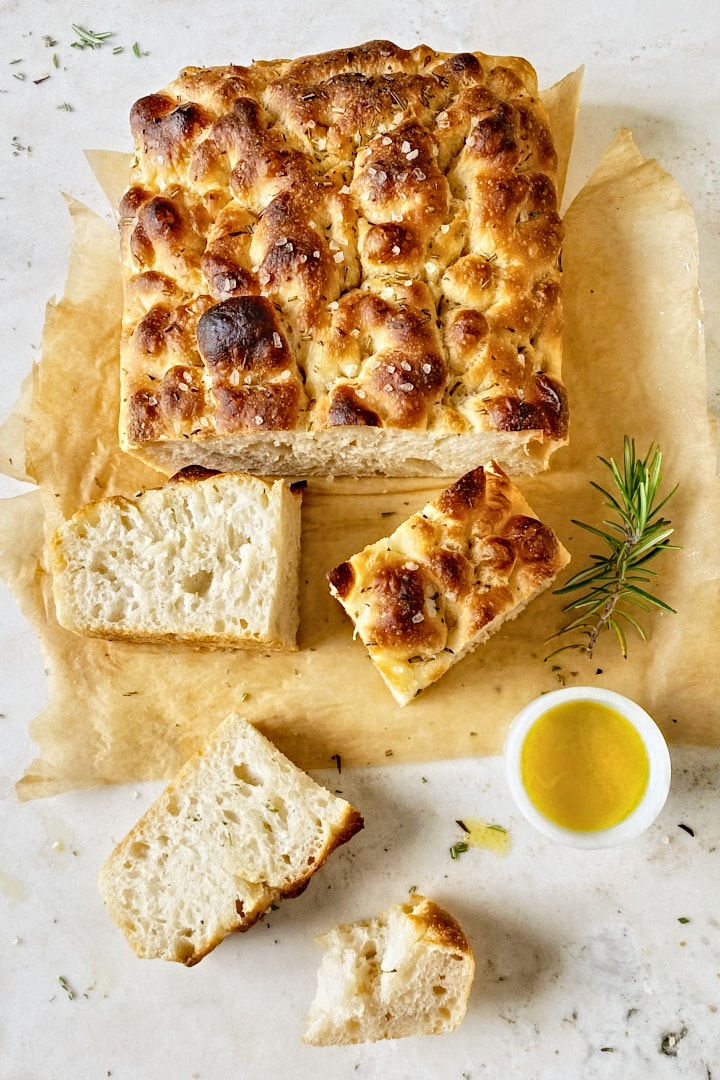
Ingredients and Tools You’ll Need
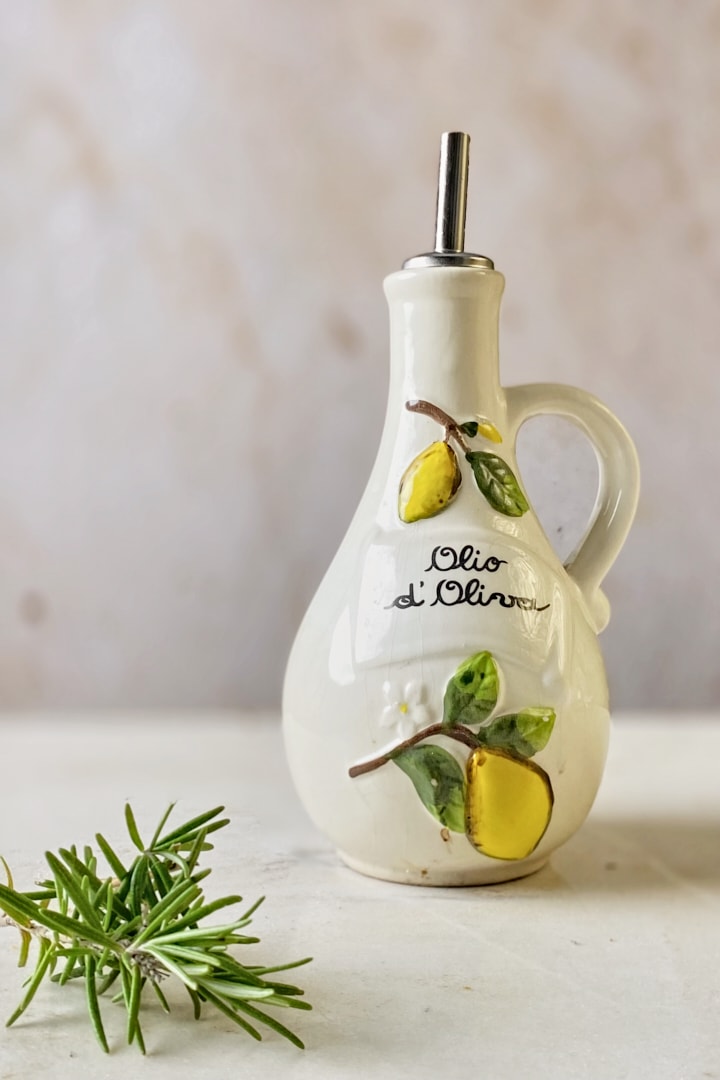
Step-by-Step Instructions
Step 1
The evening before you want to make the focaccia, prepare the leaven: Mix the sourdough starter with cold water and flour and let it rest on the counter at room temperature (around 21° C) overnight. It should be bubbly and active the next morning.
Step 2
In the morning, prepare the main dough: In the bowl of a stand mixer, dissolve the leaven and honey in the water. Add the flour and salt and use the dough hook attachment to knead on speed 1 until fully incorporated, about 1 -2 minutes. Increase the speed to setting 2 and knead until the dough starts to release from the sides of the bowl and clings to the dough hook, about 3-5 minutes. Let the dough rest for 15 – 20 minutes in the bowl. Then turn the mixer on to speed 1 again and while mixing, slowly drizzle the olive oil into the bowl. Once all the oil is incorporated, mix on speed 2 again until the dough strengthens and clumps around the hook, around 5 more minutes.
Step 3
For the bulk fermentation, transfer the dough to a proofing container, cover it and let it rest in a warm spot (around 28 °C) for 2 hours. In the winter, you can let the dough rise in the oven with a hot water bottle on the bottom rack. This recipe includes three sets of coil folds during the bulk fermentation. Perform the first fold 30 minutes after mixing. The second fold is done 30 minutes after the first one. The last fold is done 1 hour after the second one. Line the bottom of a baking dish with a piece of parchment paper. Transfer the dough to the baking dish after the last coil fold. Cover and proof it for 3 hours in a warm spot. During this time, the dough will naturally spread out. If it doesn’t reach the corners and edges, you can wet your hands and gently stretch the dough out until it fills the whole pan.
Step 4
During the last 30 minutes of the proofing time, pre-heat the oven to 240° C. When you’re ready to bake, drizzle the olive oil over the dough, spread it out and dimple the dough with wet fingers (see video below). Sprinkle it with the chopped rosemary and coarse sea salt. Bake on the middle rack for 18 – 20 minutes until the top looks crispy and golden brown. Let it rest in the pan for 10 minutes, then transfer it to a wire rack and let it cool for another 20 – 30 minutes. Focaccia tastes best when still slightly warm from the oven!
Sample Baking Schedule
Day 1
Day 2
Common Questions About Sourdough Focaccia
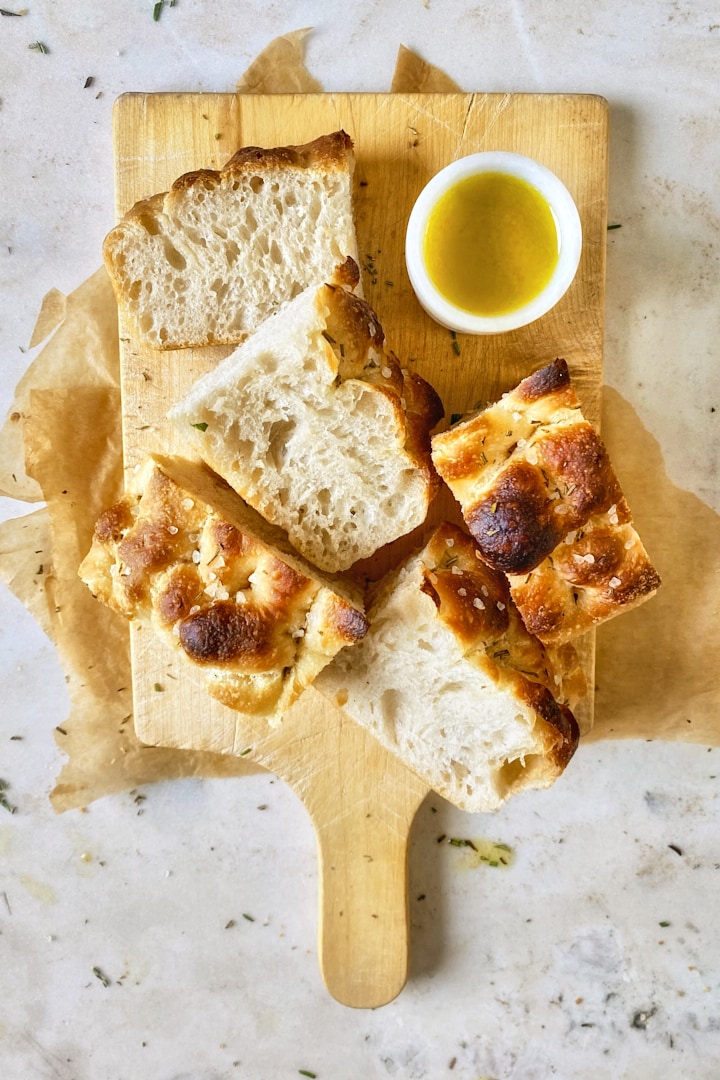
More Sourdough Recipes You May Like:
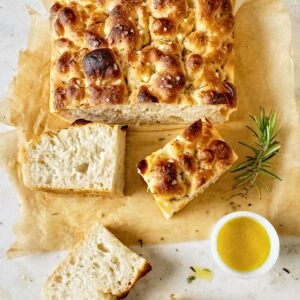
Classic Sourdough Focaccia with Rosemary and Sea Salt
Equipment
- Digital kitchen scale – for best results, always weigh your ingredients. It’s more accurate than measuring by volume.
- Stand mixer with dough hook attachment – this is a slack, high hydration dough, so it’s easier to use a stand mixer to knead
- Baking dish – ideally made of glass or ceramic
- Parchment paper – to line the baking dish
- Proofing container
- Tea towel or plastic bag – to cover the dough while resting.
Ingredients
For the leaven:
- 30 g Sourdough starter
- 30 g Water – cold
- 60 g Flour – Bread flour or all-purpose with a protein content of 11-12 %
For the main dough:
- 80 g Ripe leaven – put the remaining leaven in the fridge for the next use
- 15 g Raw honey
- 305 g Water – lukewarm around 30° C
- 360 g Bread flour
- 40 g White spelt flour
- 8 g Sea salt – fine grain
- 20 g Olive oil -extra virgin
For the topping:
- 1 Stalk Fresh Rosemary – chopped
- 2 tsbp Olive oil – extra virgin
- Pinch of Sea Salt – coarse
Instructions
For the leaven:
- The evening before you want to make the focaccia, prepare the leaven: Dissolve the sourdough starter in the cold water. Add the flour and mix until fully incorporated. Let it rest on the counter at room temperature (around 21° C) overnight. It should be bubbly and active the next morning.
For the focaccia:
- In the morning, prepare the main dough: In the bowl of a stand mixer, dissolve the leaven and honey in the water. Add the flour and salt and use the dough hook attachment to knead on speed 1 until fully incorporated, about 1-2 minutes. Increase the speed to setting 2 and knead until the dough starts to release from the sides of the bowl and clings to the dough hook, about 3-5 minutes. Let the dough rest for 15–20 minutes in the bowl. Then turn the mixer on to speed 1 again and while mixing, slowly drizzle the olive oil into the bowl. Once all the oil is incorporated, mix on speed 2 until the dough strengthens and clumps around the hook, around 5 more minutes.
- For the bulk fermentation, transfer the dough to a proofing container, cover it and let it rest in a warm spot (around 28 °C) for two hours. This recipe includes three sets of coil folds during the bulk fermentation. Perform the first fold 30 minutes after mixing the dough. The second fold is done 30 minutes after the first one. The last fold is done 1 hour after the second one. Line the bottom of a baking dish with a piece of parchment paper. Transfer the dough to the baking dish after the last coil fold. Cover and proof it for 3 hours in a warm spot. During this time, the dough will naturally spread out. If it doesn't reach the corners, you can wet your hands and gently stretch the dough out until it fills the whole pan.
- During the last 30 minutes of the proofing time, pre-heat the oven to 240° C. When you’re ready to bake, drizzle the olive oil over the dough, spread it out and dimple the dough with wet fingers (see video below). Sprinkle it with the chopped rosemary and coarse sea salt. Bake on the middle rack for 18 – 20 minutes until the top looks crispy and golden brown. Let it rest in the pan for 10 minutes, then transfer it to a wire rack and let it cool for another 20 – 30 minutes. Focaccia tastes best when still slightly warm from the oven!

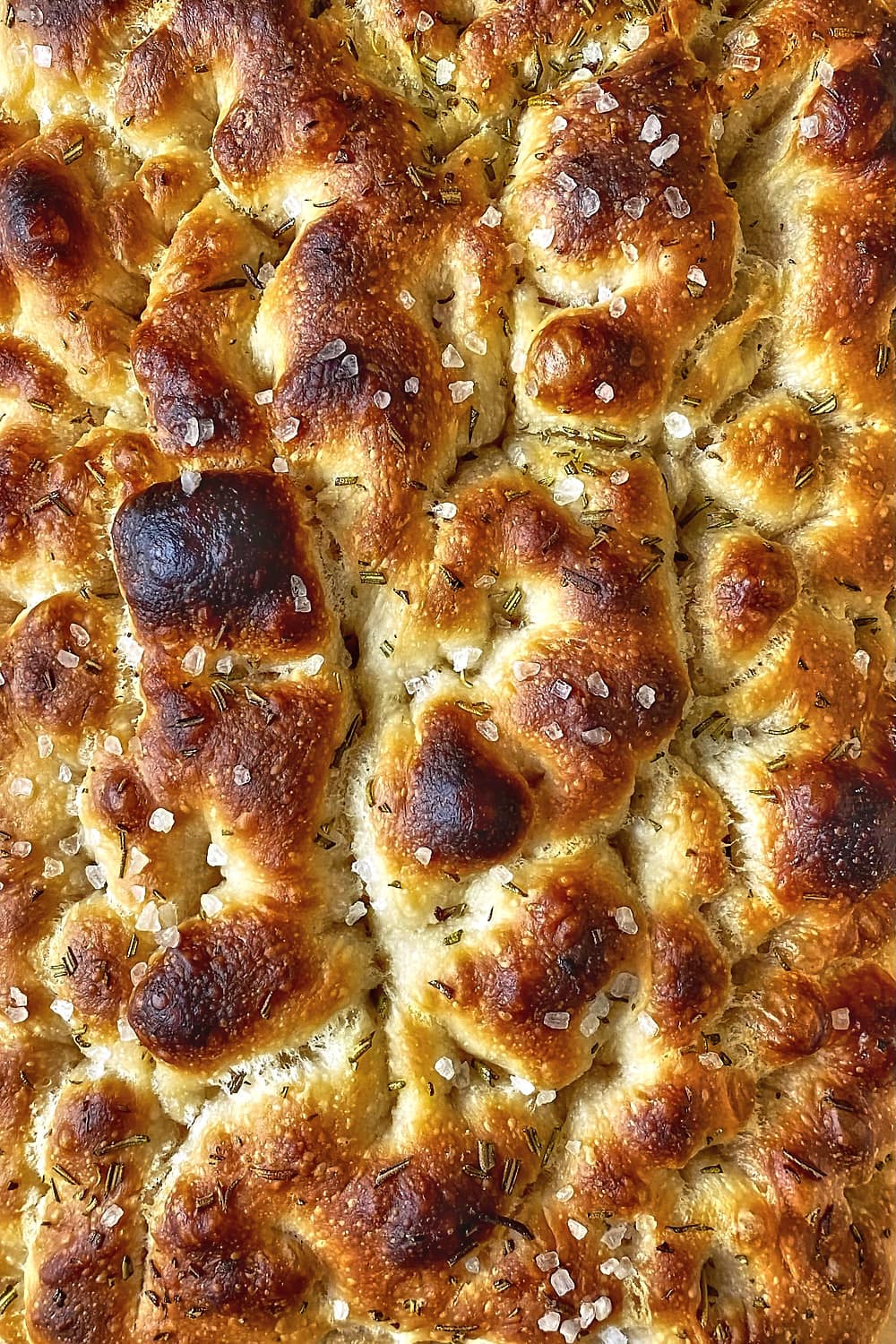
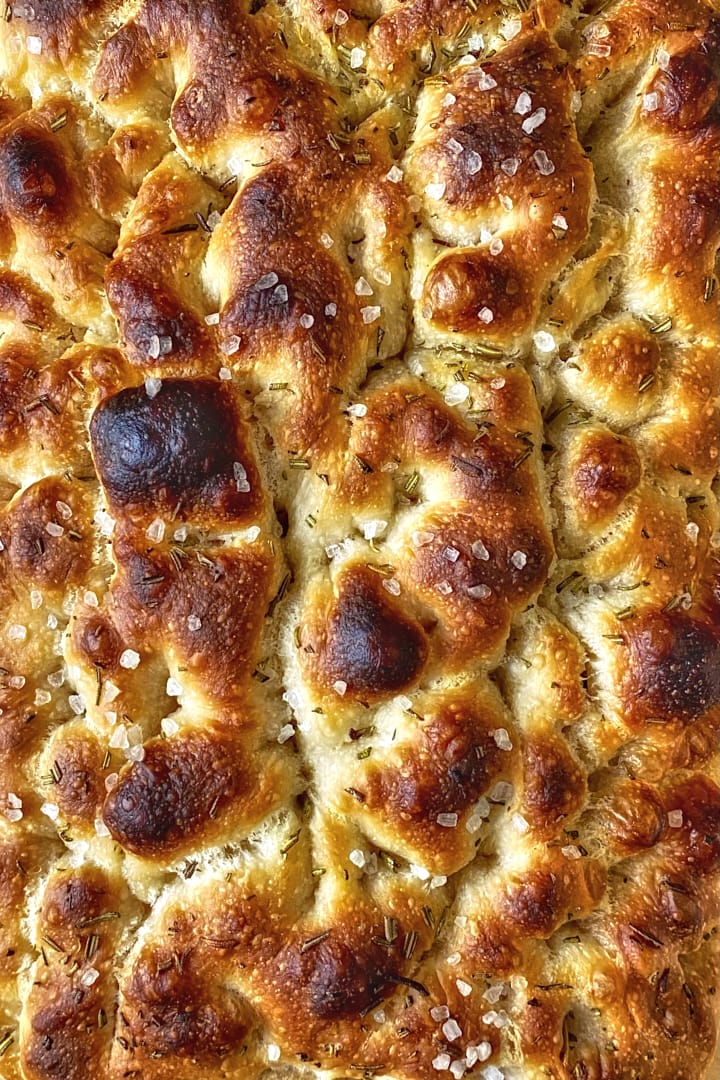
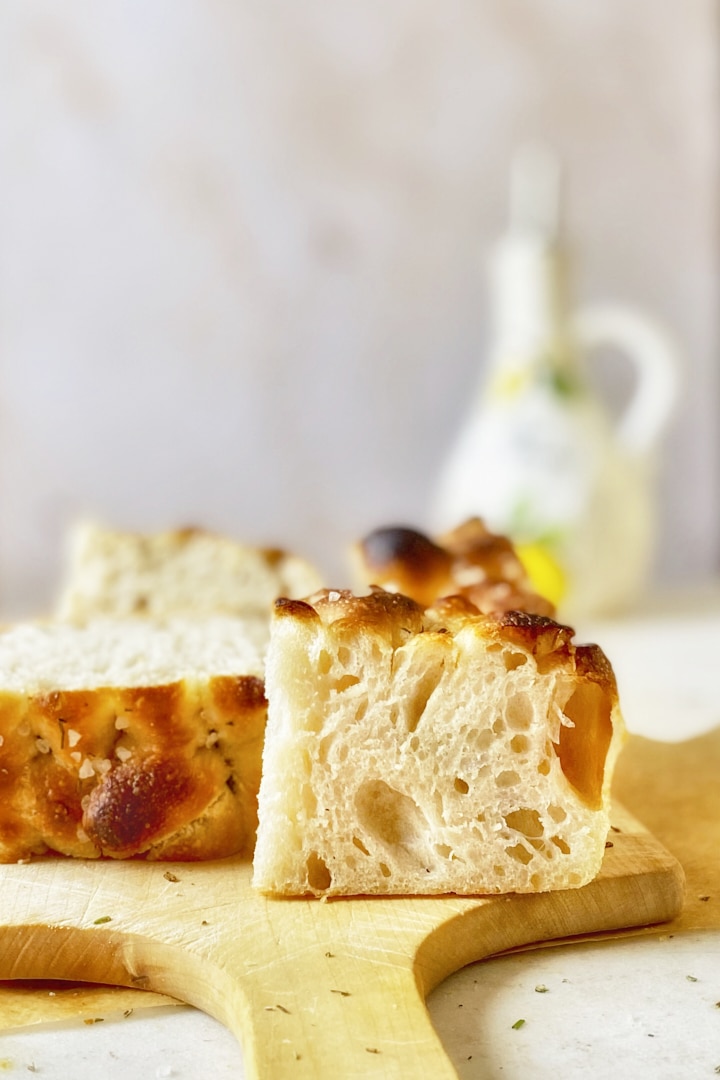
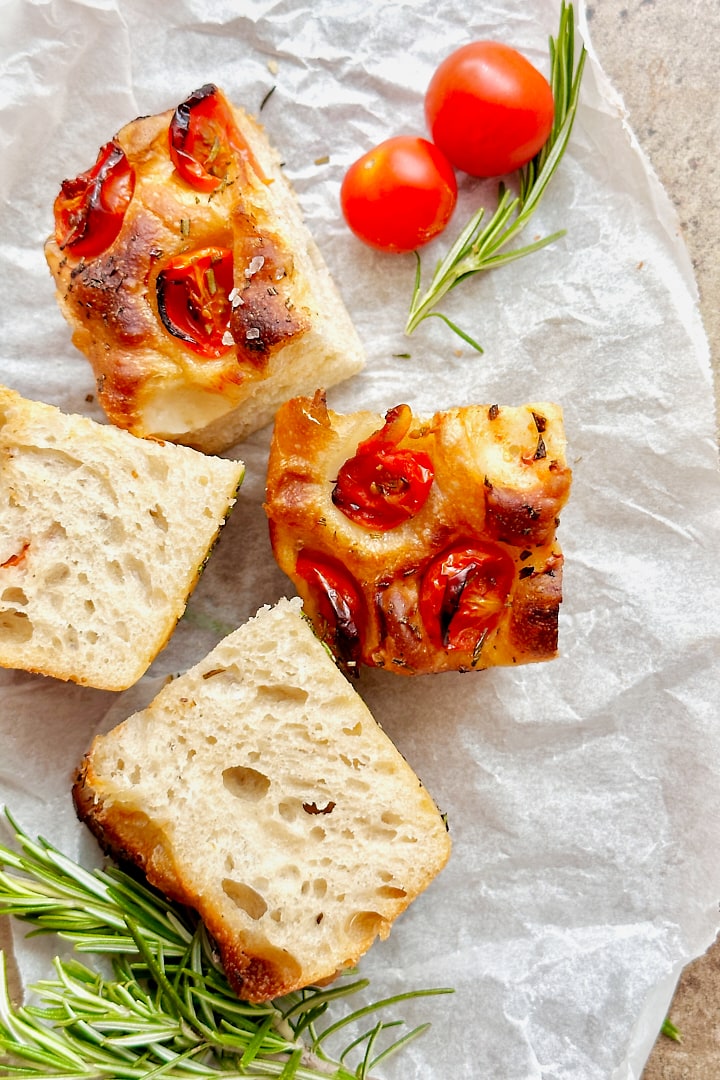

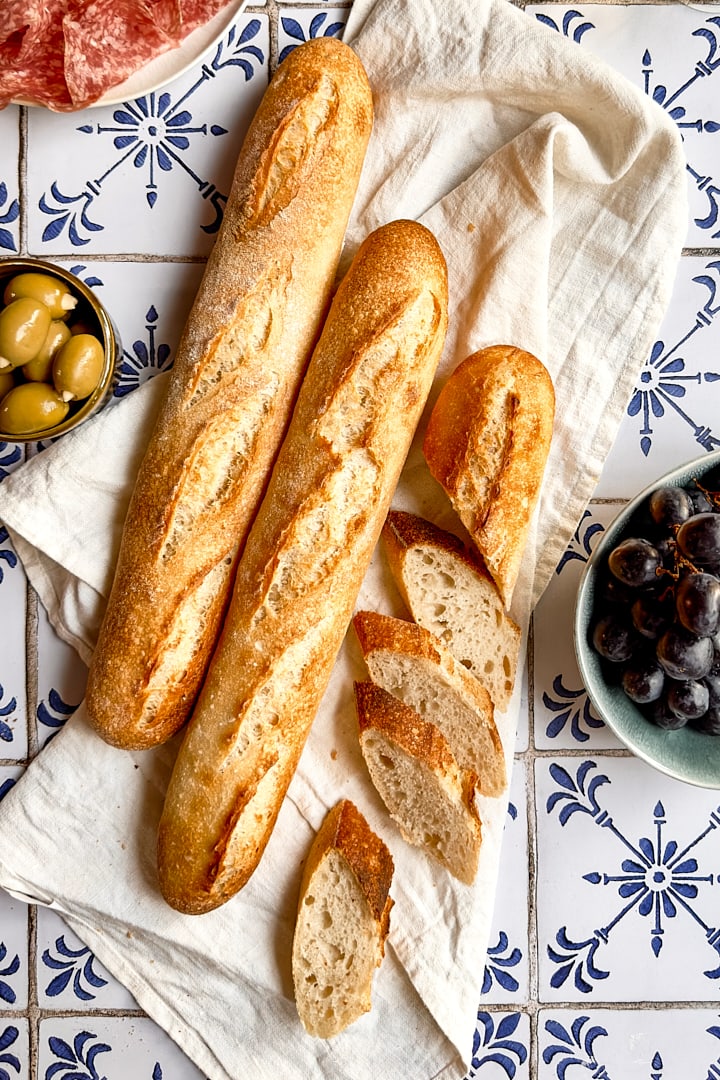
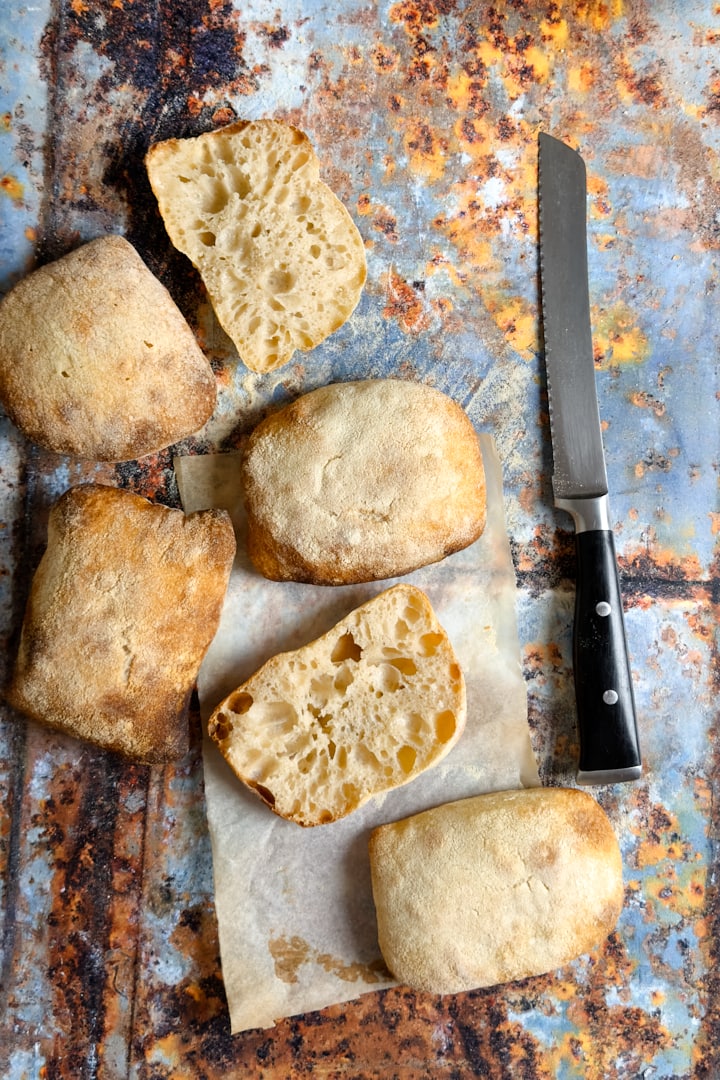
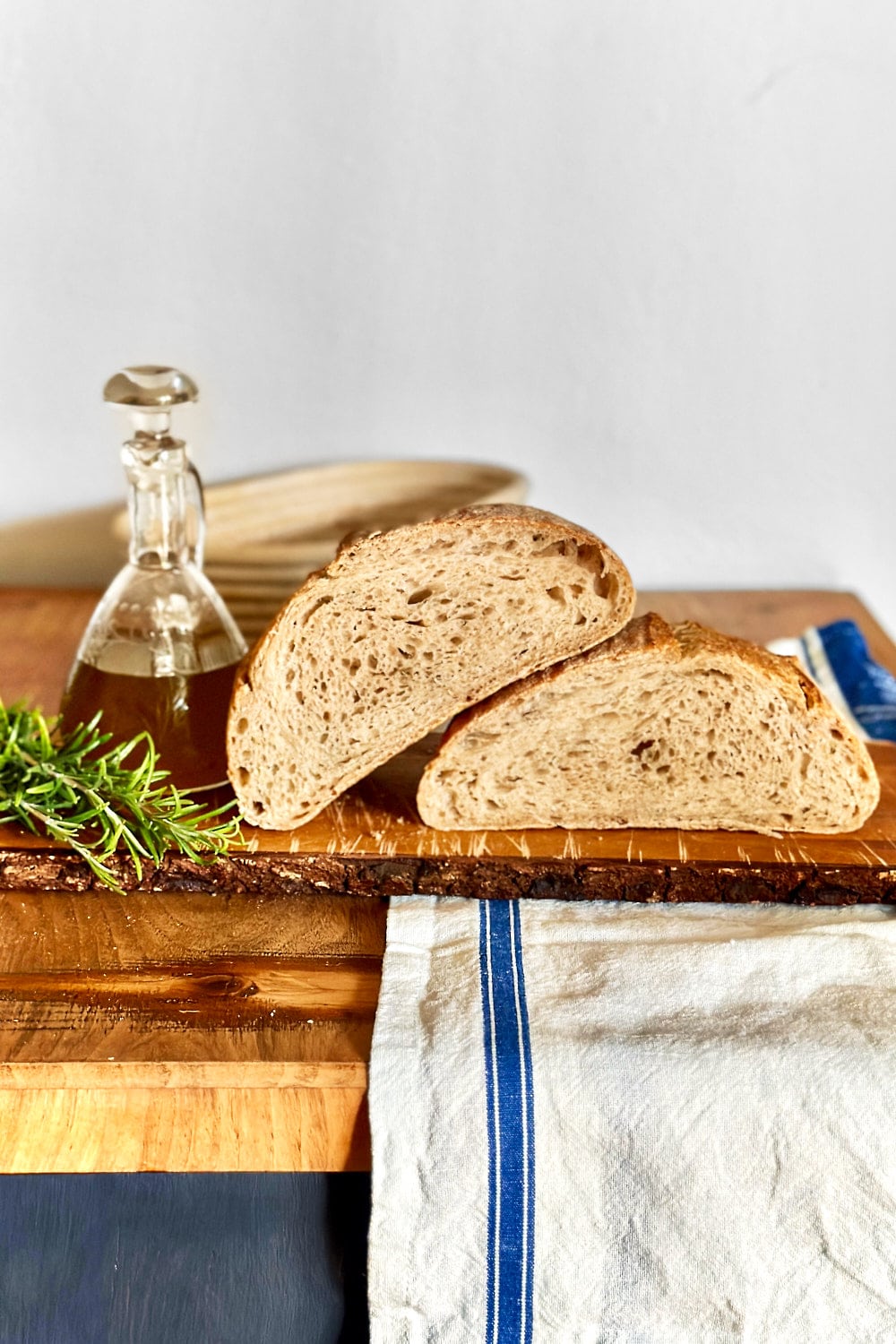
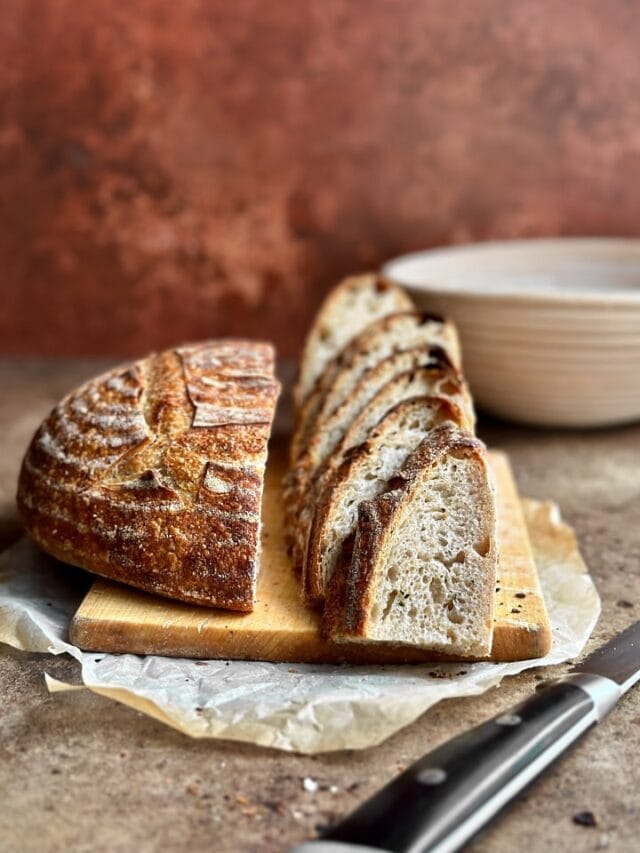
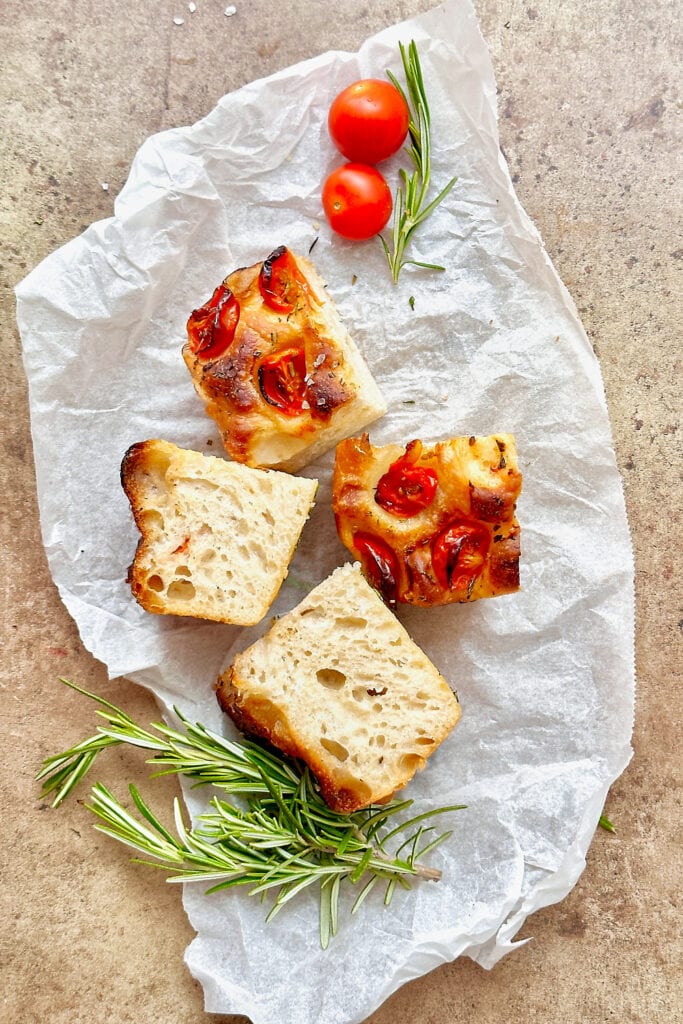

love to find the recipe that I have been finding for long time thank you. this looks amazing.
Thank you 🙂